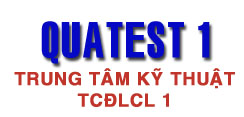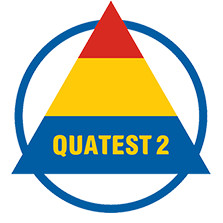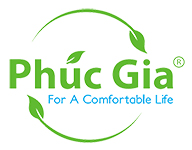Monthly STAMEQ Workshop in February 2024 with the topic “Identify the value and verify the carbon footprint of products”
Post date: Monday, Mar 18, 2024 | 16:11 - View count: 486
On March 14, the Directorate for Standards, Metrology and Quality (STAMEQ) organized a workshop in February 2024 with the topic “Identify the value and verify the carbon footprint of products”. Attending the workshop were Dr. Ha Minh Hiep – Acting General Director, along with representatives of units and agencies under STAMEQ in person and online.
Sharing about the activities of identifying the value verify carbon footprint of products, Ms. Tran Thi Ngoc Anh – Head of System Certification Department, Vietnam Certification Center (QUACERT) said that greenhouse gas is a gaseous component, capable of absorbing long-wave radiation (infrared radiation) in the wavelength range caused by the Earth, reflected from the earth’s surface when illuminated by sunlight, redistributes heat back to the Earth, causing the greenhouse effect. Types of Greenhouse Gases include: Carbon Dioxide – CO2, Methane – CH4, Nitrious – N2O, Chlorofluorocarbon-12 (CFC-12) – CCI2F2, Hydrofluorocarbon-23 (HFC-23) – CHF3, Sulfur Hexafluoride – SF6, Nitrogen Trifluoride – NF3 and other greenhouse gas groups (HFC, PFC…).
Greenhouse effect refers to the effect that occurs when the radiant energy of sunlight penetrates through windows or glass roofs, is absorbed and dispersed back into heat into the interior space, leading to to heat the entire interior space, not just the lighting areas.

Climate change is a change in the climate system such as air, water, soil, ice, and organisms, expressed in weather changes and occurring in a region or globally. Climate change has a great impact on nature, in which melting ice causes sea levels to rise, ocean temperatures increase, ocean acidification, and desertification cause vegetation to burn and soil to become barren. In addition, increasing the rate of water evaporation causes more extreme weather storms to appear.
Regarding this topic, Ms. Ngoc Anh cited examples of climate change in places around the world such as Canada recording the highest temperature in history at 49.5 degrees Celsius, or drought occurring in Europe as “the worst in 500 years”, Da Lat is deeply flooded after rain… It can be seen that climate change impacts globally. Among them, Vietnam is among 1/10 of the countries greatly affected by climate change. If sea level rises 100 cm, area will be lost from 61-80%: Bac Lieu, Kien Giang, Ca Mau; From 55-60%: Soc Trang, Can Tho, Hau Giang; From 30-50%: Vinh Long, Ben Tre, Tra Vinh, Tien Giang, Thai Binh, Nam Dinh; From 20-29%: Long An, Ninh Binh, Hai Phong.
Because of the impacts of climate change, organizations around the world have set global sustainable development goals. In particular, the Intergovernmental Panel on Climate Change sets the goal of stabilizing GHG levels in the atmosphere, preventing negative human interference with the climate.
The Intergovernmental Panel on Climate Change (IPCC) provides regular assessments of the scientific basis of change, its impacts and future risks, as well as options for adaptation and minimization; The UN Framework Convention on Climate Change’s goal is to stabilize the amount of GHGs in the atmosphere at a level that prevents dangerous human impacts on the climate; The main content of the Paris Agreement is to peak GHG emissions as soon as possible, to lower them in the second half of the century (2050), global temperature increase < 2°C, effort ≤ 1.5; Evaluation is carried out every 5 years and from 2020 provides 100 billion USD/year for developing countries; Or the Glasgow Agreement commits to net zero GHG emissions in 140 countries, ending deforestation by 2030 in more than 100 countries; Cutting methane by 30% by 2030 in nearly 100 countries; Eliminating coal power in 40 countries; The direction for zero-emission cars by 2040 in 24 countries; Supporting clean industry in 450 organizations; Set a deadline for ending oil use; The US and China cooperate to reduce GHG…

According to Ms. Ngoc Anh, sustainable development helps maintain the health and biological capacity of the environment, supporting the well-being of individuals and communities. It can also promote a better economy where there is less waste and pollution, fewer emissions, more jobs and better wealth distribution.
Sharing about solutions to help with climate change, Ms. Ngoc Anh said that carbon neutrality and net – zero are the current global trends. Carbon neutrality is understood as not adding new greenhouse gas emissions to the atmosphere. Where emissions continue, they must be offset by absorbing an equivalent amount from the atmosphere, for example through carbon capture and reforestation supported by carbon credit schemes.
Net zero is “a situation in which excess anthropogenic greenhouse gas (GHG) emissions are balanced by anthropogenic removals over a specified time period and within specified boundaries.” Achieving this balance is a complex process, involving emissions reductions, offsets and innovative technology.
The transition to a zero-emissions world can be achieved by reducing emissions at source and balancing residual emissions through carbon dioxide removal. Emissions reduction is the process of directly reducing emissions of all greenhouse gases (CO2 and other greenhouse gases including methane (CH4), nitrous oxide (N2O) and hydrofluorocarbons, which tend to trap more heat than carbon dioxide).
In Vietnam, there are Decree 06/2022/ND-CP regulating greenhouse gas emissions mitigation and protecting the ozone layer and Circular 01/2022/TT-BTNMT detailing the implementation of the law as environmental protection in response to climate change. Besides, by 2030, with domestic resources, Vietnam will reduce total greenhouse gas emissions by 9% compared to the business-as-usual (BAU) development scenario; This contribution can be up to 27% when receiving international support through bilateral and multilateral cooperation and implementation of mechanisms under the Paris Agreement; Completely eliminate CFCs, Halon, CTC and many controlled substances such as HCFC, Methyl bromide; Prevent increase in consumption of hydrofluorocarbons (HFCs) – substances used in the production of refrigeration equipment, car air conditioners, fire extinguishing equipment… that affect the ozone layer from 2024 and reduce 80% of consumption by 2045.
Within the framework of the workshop, Ms. Ngoc Anh proposed a number of measures to reduce greenhouse gases, including using energy from water, solar power, solar energy, wind energy, and geoenergy heat to replace the type of fuel used, use energy-saving equipment, eliminate greenhouse gas absorption from fuel combustion, produce CO2 raw materials…
The workshop also discuss and answers questions and difficulties between experts and participants.





















